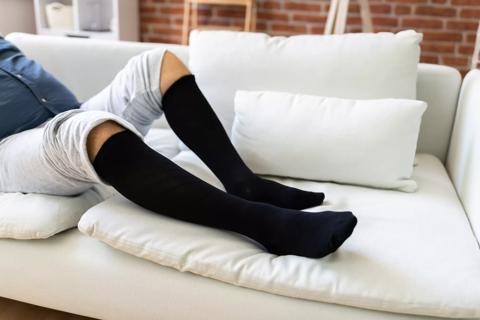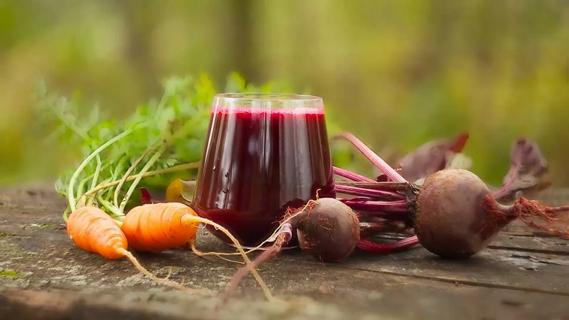Steer clear of bells and whistles — simple, affordable monitors are all you really need

Maybe your blood pressure has been creeping up over time, or you’re starting treatment for hypertension. Your doctor suggests you buy a home blood pressure monitor to help keep track between office visits. Simple enough, right?
Advertisement
Cleveland Clinic is a non-profit academic medical center. Advertising on our site helps support our mission. We do not endorse non-Cleveland Clinic products or services. Policy
Maybe not. A quick check online reveals hundreds of different models — and even a bunch of apps for your smartphone. How do you even start to sort through all that without, well, spiking your blood pressure?
Don’t worry, we’ve got you covered. Heart and hypertension specialist Luke Laffin, MD, has six tips on what you need — and what you don’t need — in a home blood pressure monitor.
Before we dive into Dr. Laffin’s tips, let’s review how to take your blood pressure at home. The American Heart Association has a few suggestions to make sure your readings are accurate:
Advertisement
Of course, you can do everything right and still get an inaccurate blood pressure reading if you’re working with a sub-par monitor.
With so many blood pressure monitors on the market, how do you decide what to pick? And how do you know that your monitor’s working properly? Dr. Laffin says you need to keep six things in mind.
You can purchase a blood pressure monitor at any drugstore or online. No matter where you buy yours, Dr. Laffin recommends getting a monitor with an automatic cuff that wraps around your upper arm. It’s called a brachial blood pressure monitor.
“Don’t get one where you need a stethoscope,” he advises. “An automatic cuff is best.”
What about those monitors with wrist cuffs? Or finger cuffs? The American Heart Association recommends against both for people who are able to use an arm cuff. It’s the best option and tends to provide the most accurate readings.
The size of the cuff is the most important feature to check when you’re selecting a blood pressure monitor, Dr. Laffin notes. In fact, a 2023 study found that “miscuffing” resulted in “strikingly inaccurate BP measurements.”
The size you need is determined by the circumference of your upper arm. A cuff that doesn’t fit properly may give you inaccurate readings, leading to a misdiagnosis.
Right about now you may be thinking, what about the one-size-fits-all options that many home monitors offer? They aren’t terrible, but they also aren’t as reliable as cuffs that are fitted to the size and shape of your arm. This is one of those situations where it’s worth it to pull out the tape measure. You need to measure the circumference of the middle of your arm — exactly halfway between your shoulder and elbow.
The different cuff sizes are:
Forget the bells and whistles. They boost the cost of the monitor and are often unnecessary.
Sure, Bluetooth connectivity and storing your readings in the cloud are cool features, but you don’t really need them.
“You shouldn’t have to pay more than $40 to $60 for an appropriate, physician-approved blood pressure monitor that will do the job just fine,” Dr. Laffin says.
If you look at any app store, you’re likely to find dozens of blood pressure measurement apps for your smartphone.
Advertisement
Dr. Laffin is blunt: “These products don’t work and have not been rigorously tested.”
Certain apps claim to measure your blood pressure through pulse wave velocity, which essentially looks at the wave form in the artery of your finger.
“But those are often inaccurate,” he continues. The last thing you want is to obtain false information and be falsely scared — or falsely reassured — about your blood pressure numbers.
By now, you might be feeling a bit overwhelmed by all the things you need to keep in mind when selecting a monitor. After all, there are so many brands out there.
Have no fear: There’s a website out there that can help cull that list for you!
It’s called the US Blood Pressure Validated Device Listing. This independent review committee tests blood pressure monitoring products for accuracy and gives specific models their stamp of approval. The committee reviews all blood pressure monitors, including the stations you see at grocery stores and pharmacies. So, while not everything you see on the site is going to fit your needs or budget, it’s a quick way to find a product you can trust.
Of course, even the best blood pressure monitors aren’t always going to be perfect. Manufacturing errors, wear and tear, battery depletion — there are plenty of issues that can cause inaccurate readings. That’s why it’s important to test your device against other monitors on a regular basis.
Advertisement
Most monitors you find in a drugstore or online are fine, Dr. Laffin says. But it doesn’t hurt to take it to your doctor’s office and check yours against the office monitor.
“If the systolic blood pressure (the top number) on your cuff is within 10 points of the monitor, then it’s generally accurate,” he says.
Most home blood pressure machines last for about two or three years. After that, check it at your healthcare provider’s office annually to make sure it’s still accurate.
There’s one extra feature you might consider seeking out to help boost a monitor’s accuracy: Taking three measurements automatically.
Some monitors do this each time you check your blood pressure. They take a first reading; wait 30 to 60 seconds and take a second reading; then wait 30 to 60 more seconds and take a final measurement.
“This is helpful because it averages your three readings, which probably more closely reflects your actual blood pressure than the first number alone,” Dr. Laffin explains.
If you find yourself in a situation where you need to regularly monitor your blood pressure, the last thing you need is uncertainty — about the product you’re buying, your testing procedure or the readings you’re getting. You can now consider yourself armed (get it?) with all the basic information you need.
Advertisement
If any other questions come up, don’t be shy about checking in with your healthcare provider. If they’re asking you to check your blood pressure regularly, they’re going to be just as invested as you are in making sure it’s done right!
Learn more about our editorial process.
Advertisement

Moderation is best when consuming caffeinated drinks to avoid unhealthy spikes in BP

Medication, exercise and diet changes can all help

First things first — slowly sit or lie down

An ideal blood pressure is less than 120 mm Hg systolic and less than 80 mm Hg diastolic

While not magic elixirs, some drinks like beet juice and skim milk may help keep numbers down

Low blood pressure got you feeling down? Staying hydrated and wearing compression socks can help

Don’t believe the rumors about aspirin being a magic way to lower BP

Blood pressure naturally dips when we sleep — and that dipping is crucial for a healthy heart

If you’re feeling short of breath, sleep can be tough — propping yourself up or sleeping on your side may help

If you fear the unknown or find yourself needing reassurance often, you may identify with this attachment style

If you’re looking to boost your gut health, it’s better to get fiber from whole foods